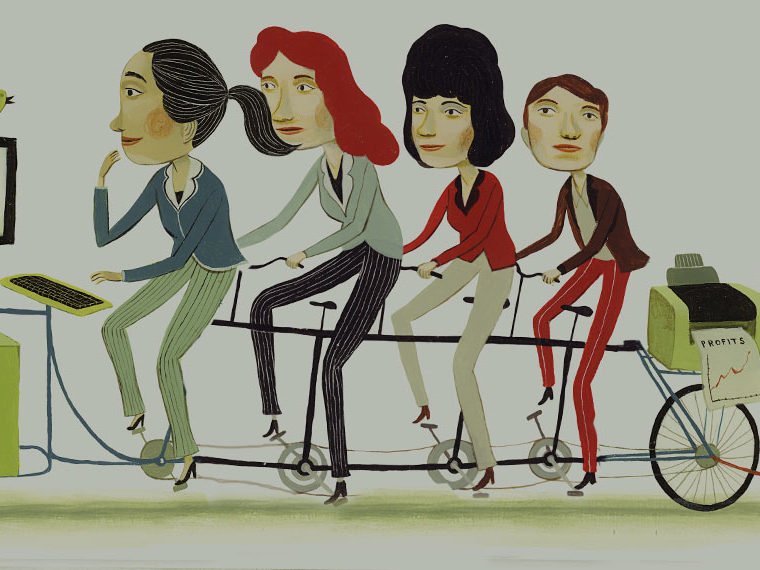Large study sees increases in education, declines in public assistance
Early education from Head Start, a federally funded preschool program for disadvantaged kids, greatly improves the likelihood of obtaining financial self-sufficiency in adulthood, according to an unusually large study of its long-term effects.
Getting more education means disadvantaged children are less likely to need public assistance like disability payments and food allowances as adults, meaning that funding Head Start generated revenue — rather than costs — for the federal government, according to a working paper from UCLA’s Martha J. Bailey, University of Nebraska’s Brenden D. Timpe and The World Bank’s Shuqiao Sun published by the National Bureau of Economic Research. They estimate that the government makes 5.4% to 9.1% per year for at least 30 years for every child it put through Head Start, due solely to savings on public assistance and a small increase in tax revenue from higher wages earned by participants.
The study considers education and economic productivity of about 22.5 million 25- to 54-year-olds born between 1950 and 1980. The group that was eligible for a Head Start school — those who were 5 and under when a program was available in their county of birth — graduated from high school and college at higher rates than the ineligible group. College completion rate among the eligible group was about 39%, or 12 percentage points higher than their slightly older peers, according to the working paper.
Opt In to the Review Monthly Email Update.
Head Start eligibility raised average annual earnings slightly, the study finds. But filings for disability claims among men who had been eligible were about 42% lower (4.8 percentage points) than in the ineligible group, the study finds. Among eligible women, poverty rates were 32% (4.4 percentage points) lower. Overall, Head Start eligibility reduced the incidence of adult poverty by 23% and receipt of public assistance income by 27% percent among participants, the study finds.
Head Start was launched in 1965 as part of President Lyndon B. Johnson’s War on Poverty. In addition to a scholastic curriculum for preschoolers, the program offers health screenings, meals and referrals to social services as needed. By addressing early social and academic skills, as well as health and emotional needs, the founders expected Head Start to better prepare underprivileged students for success in elementary school and beyond.
Whether Head Start provides lasting benefits for its graduates, however, has been hotly contested. Although there are many studies of Head Start’s effects, most involve small samples and short time spans. A short-term study by the U.S. Department of Health and Human Services in 2010, for example, involved fewer than 5,000 students followed into the first grade. The review, which found the young Head Start graduates testing no better than their peers, prompted calls to cut its funding even as President Obama expanded the program and imposed stricter curriculum and accountability measures on its schools. President Joe Biden recently asked Congress to raise Head Start funding to $11.9 billion from $10.7 billion.
Bailey, Timpe and Sun take advantage of Head Start’s uneven nationwide rollout between 1965 and 1980 to create a much larger study sample and measure the program’s impacts much later in life — not just on test scores. By matching Census and American Community Survey data to Social Security Administration data on the exact date and place of birth for each subject, they could see which subjects had access to the program.
Evaluating the long-run effects of Head Start can be difficult. Eligible children tend to come from low-income families and neighborhoods, so they can’t simply be compared with ineligible children, who generally come from better-resourced backgrounds. The researchers sidestepped this problem by taking advantage of the sudden launch of the program: The children who filled Head Start classrooms in its first few years can be readily compared with kids just a year or two older, who grew up in the same families and neighborhoods but were born a little too early to benefit directly from the program.
“Head Start in its earliest years was far from a model preschool program,” the authors note. “Nevertheless, even the less-than-perfect implementation of Head Start was likely higher quality than the alternatives available to low-income children in the 1960s.”
“Importantly, similar concerns hold today,” they note, with Head Start’s ratings in the middle of the pack for preschools. But, they say, it may still be much better than less formal child care.
“Overall, Head Start appears to have achieved the goals of its early architects, both increasing children’s economic opportunities and reducing poverty,” the authors conclude.
Featured Faculty
-
Martha J. Bailey
Professor of Economics
About the Research
Bailey, M.J., Sun, S. and Timpe, B. (2020). Prep School for Poor Kids: The Long-Run Impacts of Head Start on Human Capital and Economic Self-Sufficiency.






